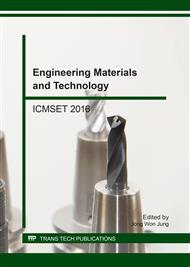p.27
p.32
p.38
p.44
p.50
p.59
p.64
p.70
p.77
Failure Analysis of Weld Crack of P92 Steel
Abstract:
In order to find out the causes of weld cracks in the main steam pipe welded joint of a power plant, a series of relevant tests are specially formulated, which include room temperature tensile and high temperature tensile test, room temperature impact test, the crack tip metallographic observation, crack fracture scanning electron microscope observation, oxide film thickness measurement, and so on. By analyzing the metallographic photographs of the crack, the crack character is preliminarily determined. In addition, the direction of crack extension is determined by the thickness of oxide film in different parts. The crack failure mechanism has been identified. The results show that the welding heat crack occurs in 1# crack initiation position; and the crack initiation in 2# weld crack (primary crack) position is caused by the root defect of welding seam and lead to a high brittleness, which results in the crack failure by crack propagating in operational process gradually.
Info:
Periodical:
Pages:
50-55
Citation:
Online since:
June 2017
Authors:
Keywords:
Price:
Сopyright:
© 2017 Trans Tech Publications Ltd. All Rights Reserved
Share:
Citation:


